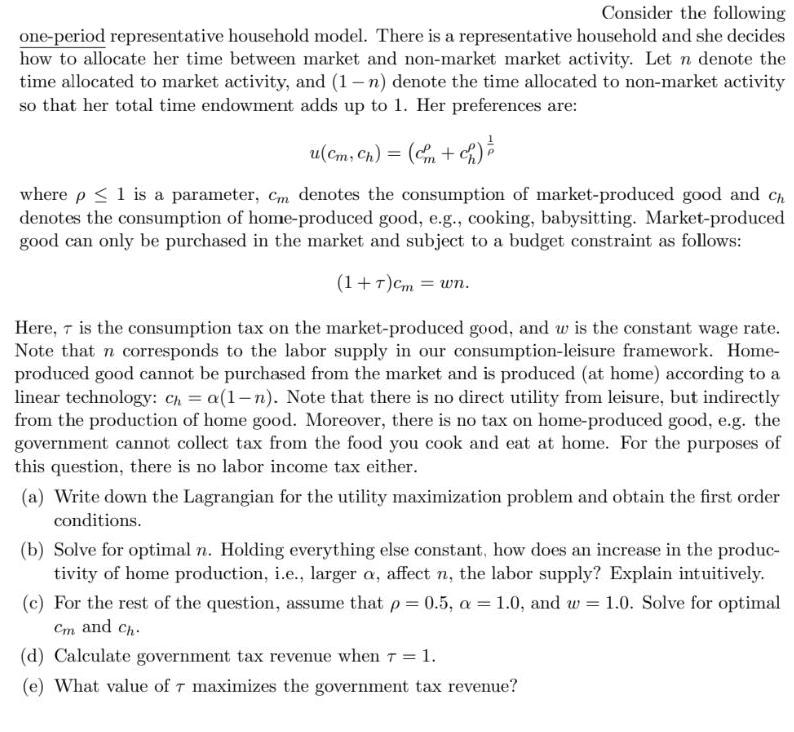Answered step by step
Verified Expert Solution
Question
1 Approved Answer
Consider the following one-period representative household model. There is a representative household and she decides how to allocate her time between market and non-market

Consider the following one-period representative household model. There is a representative household and she decides how to allocate her time between market and non-market market activity. Let n denote the time allocated to market activity, and (1-n) denote the time allocated to non-market activity so that her total time endowment adds up to 1. Her preferences are: u(cm, Ch) = (cm + ch) where p 1 is a parameter, Cm denotes the consumption of market-produced good and ch denotes the consumption of home-produced good, e.g., cooking, babysitting. Market-produced good can only be purchased in the market and subject to a budget constraint as follows: (1+r)cm = wn. Here, is the consumption tax on the market-produced good, and w is the constant wage rate. Note that n corresponds to the labor supply in our consumption-leisure framework. Home- produced good cannot be purchased from the market and is produced (at home) according to a linear technology: Ch = a(1-n). Note that there is no direct utility from leisure, but indirectly from the production of home good. Moreover, there is no tax on home-produced good, e.g. the government cannot collect tax from the food you cook and eat at home. For the purposes of this question, there is no labor income tax either. (a) Write down the Lagrangian for the utility maximization problem and obtain the first order conditions. (b) Solve for optimal n. Holding everything else constant, how does an increase in the produc- tivity of home production, i.e., larger a, affect n, the labor supply? Explain intuitively. (c) For the rest of the question, assume that p = 0.5, a = 1.0, and w = 1.0. Solve for optimal Cm and Ch. (d) Calculate government tax revenue when 7 = 1. (e) What value of 7 maximizes the government tax revenue?
Step by Step Solution
★★★★★
3.44 Rating (154 Votes )
There are 3 Steps involved in it
Step: 1
a Lagrangian and First Order Conditions The households utility maximization problem is to choose the optimal allocation of time between market and non...
Get Instant Access to Expert-Tailored Solutions
See step-by-step solutions with expert insights and AI powered tools for academic success
Step: 2

Step: 3

Ace Your Homework with AI
Get the answers you need in no time with our AI-driven, step-by-step assistance
Get Started


